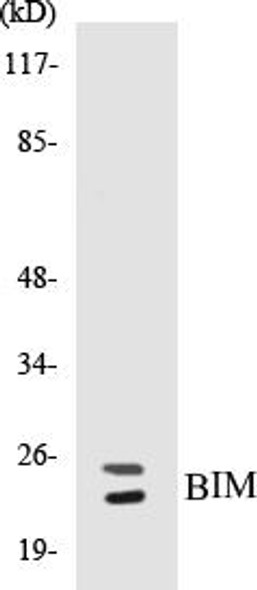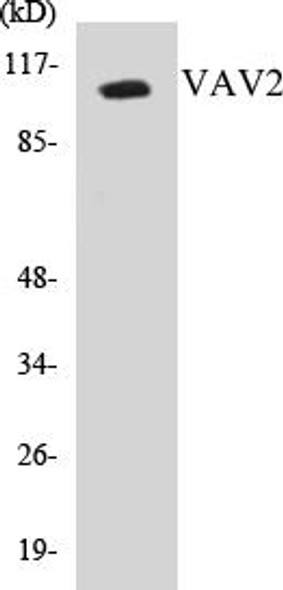Signal Transduction
Kir6.2 Colorimetric Cell-Based ELISA Kit
- SKU:
- CBCAB00732
- Product Type:
- ELISA Kit
- ELISA Type:
- Cell Based
- Research Area:
- Signal Transduction
- Reactivity:
- Human
- Reactivity:
- Mouse
- Detection Method:
- Colorimetric
Description
| Product Name: | Kir6.2 Colorimetric Cell-Based ELISA |
| Product Code: | CBCAB00732 |
| ELISA Type: | Cell-Based |
| Target: | Kir6.2 |
| Reactivity: | Human, Mouse |
| Dynamic Range: | > 5000 Cells |
| Detection Method: | Colorimetric 450 nmStorage/Stability:4°C/6 Months |
| Format: | 96-Well Microplate |
The Kir6.2 Colorimetric Cell-Based ELISA Kit is a convenient, lysate-free, high throughput and sensitive assay kit that can detect Kir6.2 protein expression profile in cells. The kit can be used for measuring the relative amounts of Kir6.2 in cultured cells as well as screening for the effects that various treatments, inhibitors (ie siRNA or chemicals), or activators have on Kir6.2.
Qualitative determination of Kir6.2 concentration is achieved by an indirect ELISA format. In essence, Kir6.2 is captured by Kir6.2-specific primary antibodies while the HRP-conjugated secondary antibodies bind the Fc region of the primary antibody. Through this binding, the HRP enzyme conjugated to the secondary antibody can catalyze a colorimetric reaction upon substrate addition. Due to the qualitative nature of the Cell-Based ELISA, multiple normalization methods are needed:
| 1. | A monoclonal antibody specific for human GAPDH is included to serve as an internal positive control in normalizing the target absorbance values. |
| 2. | Following the colorimetric measurement of HRP activity via substrate addition, the Crystal Violet whole-cell staining method may be used to determine cell density. After staining, the results can be analysed by normalizing the absorbance values to cell amounts, by which the plating difference can be adjusted. |
| Database Information: | Gene ID: 3767, UniProt ID: Q14654, OMIM: 600937/601820/606176/610582, Unigene: Hs.248141 |
| Gene Symbol: | KCNJ11 |
| Sub Type: | None |
| UniProt Protein Function: | Kir6.2: This receptor is controlled by G proteins. Inward rectifier potassium channels are characterized by a greater tendency to allow potassium to flow into the cell rather than out of it. Their voltage dependence is regulated by the concentration of extracellular potassium; as external potassium is raised, the voltage range of the channel opening shifts to more positive voltages. The inward rectification is mainly due to the blockage of outward current by internal magnesium. Can be blocked by extracellular barium. Subunit of ATP-sensitive potassium channels (KATP). Can form cardiac and smooth muscle-type KATP channels with ABCC9. KCNJ11 forms the channel pore while ABCC9 is required for activation and regulation. Defects in KCNJ11 are the cause of familial hyperinsulinemic hypoglycemia type 2 (HHF2); also known as persistent hyperinsulinemic hypoglycemia of infancy (PPHI) or congenital hyperinsulinism. HHF is the most common cause of persistent hypoglycemia in infancy and is due to defective negative feedback regulation of insulin secretion by low glucose levels. It causes nesidioblastosis, a diffuse abnormality of the pancreas in which there is extensive, often disorganized formation of new islets. Unless early and aggressive intervention is undertaken, brain damage from recurrent episodes of hypoglycemia may occur. Defects in KCNJ11 are a cause of diabetes mellitus permanent neonatal (PNDM). PNDM is a rare form of diabetes distinct from childhood-onset autoimmune diabetes mellitus type 1. It is characterized by insulin-requiring hyperglycemia that is diagnosed within the first months of life. Permanent neonatal diabetes requires lifelong therapy. Defects in KCNJ11 are the cause of transient neonatal diabetes mellitus type 3 (TNDM3). Neonatal diabetes mellitus, defined as insulin-requiring hyperglycemia within the first month of life, is a rare entity. In about half of the neonates, diabetes is transient and resolves at a median age of 3 months, whereas the rest have a permanent form of diabetes. In a significant number of patients with transient neonatal diabetes mellitus, diabetes type 2 appears later in life. The onset and severity of TNDM3 is variable with childhood-onset diabetes, gestational diabetes or adult-onset diabetes described. Defects in KCNJ11 may contribute to non-insulin- dependent diabetes mellitus (NIDDM), also known as diabetes mellitus type 2. Belongs to the inward rectifier-type potassium channel (TC 1.A.2.1) family. KCNJ11 subfamily. |
| UniProt Protein Details: | Protein type:Membrane protein, multi-pass; Membrane protein, integral; Channel, potassium Chromosomal Location of Human Ortholog: 11p15.1 Cellular Component: ATP-sensitive potassium channel complex; integral to plasma membrane; plasma membrane; T-tubule; voltage-gated potassium channel complex Molecular Function:ankyrin binding; ATP binding; ATP-activated inward rectifier potassium channel activity; potassium ion binding; voltage-gated potassium channel activity Biological Process: glucose metabolic process; negative regulation of insulin secretion; neurological system process; potassium ion import; regulation of insulin secretion; regulation of membrane potential; response to ATP; response to drug; transmembrane transport Disease: Diabetes Mellitus, Noninsulin-dependent; Diabetes Mellitus, Permanent Neonatal; Diabetes Mellitus, Transient Neonatal, 3; Hyperinsulinemic Hypoglycemia, Familial, 2; Maturity-onset Diabetes Of The Young, Type 13 |
| NCBI Summary: | Potassium channels are present in most mammalian cells, where they participate in a wide range of physiologic responses. The protein encoded by this gene is an integral membrane protein and inward-rectifier type potassium channel. The encoded protein, which has a greater tendency to allow potassium to flow into a cell rather than out of a cell, is controlled by G-proteins and is found associated with the sulfonylurea receptor SUR. Mutations in this gene are a cause of familial persistent hyperinsulinemic hypoglycemia of infancy (PHHI), an autosomal recessive disorder characterized by unregulated insulin secretion. Defects in this gene may also contribute to autosomal dominant non-insulin-dependent diabetes mellitus type II (NIDDM), transient neonatal diabetes mellitus type 3 (TNDM3), and permanent neonatal diabetes mellitus (PNDM). Multiple alternatively spliced transcript variants that encode different protein isoforms have been described for this gene. [provided by RefSeq, Oct 2009] |
| UniProt Code: | Q14654 |
| NCBI GenInfo Identifier: | 76803775 |
| NCBI Gene ID: | 3767 |
| NCBI Accession: | Q14654.2 |
| UniProt Secondary Accession: | Q14654,Q2M1H7, Q58EX3, Q8IW96, B4DWI4, E9PNK0, |
| UniProt Related Accession: | Q14654 |
| Molecular Weight: | 33,263 Da |
| NCBI Full Name: | ATP-sensitive inward rectifier potassium channel 11 |
| NCBI Synonym Full Names: | potassium voltage-gated channel subfamily J member 11 |
| NCBI Official Symbol: | KCNJ11 |
| NCBI Official Synonym Symbols: | BIR; HHF2; PHHI; IKATP; TNDM3; KIR6.2; MODY13 |
| NCBI Protein Information: | ATP-sensitive inward rectifier potassium channel 11 |
| UniProt Protein Name: | ATP-sensitive inward rectifier potassium channel 11 |
| UniProt Synonym Protein Names: | IKATP; Inward rectifier K(+) channel Kir6.2; Potassium channel, inwardly rectifying subfamily J member 11 |
| Protein Family: | ATP-sensitive inward rectifier potassium channel |
| UniProt Gene Name: | KCNJ11 |
| UniProt Entry Name: | KCJ11_HUMAN |
| Component | Quantity |
| 96-Well Cell Culture Clear-Bottom Microplate | 2 plates |
| 10X TBS | 24 mL |
| Quenching Buffer | 24 mL |
| Blocking Buffer | 50 mL |
| 15X Wash Buffer | 50 mL |
| Primary Antibody Diluent | 12 mL |
| 100x Anti-Phospho Target Antibody | 60 µL |
| 100x Anti-Target Antibody | 60 µL |
| Anti-GAPDH Antibody | 60 µL |
| HRP-Conjugated Anti-Rabbit IgG Antibody | 12 mL |
| HRP-Conjugated Anti-Mouse IgG Antibody | 12 mL |
| SDS Solution | 12 mL |
| Stop Solution | 24 mL |
| Ready-to-Use Substrate | 12 mL |
| Crystal Violet Solution | 12 mL |
| Adhesive Plate Seals | 2 seals |
The following materials and/or equipment are NOT provided in this kit but are necessary to successfully conduct the experiment:
- Microplate reader able to measure absorbance at 450 nm and/or 595 nm for Crystal Violet Cell Staining (Optional)
- Micropipettes with capability of measuring volumes ranging from 1 µL to 1 ml
- 37% formaldehyde (Sigma Cat# F-8775) or formaldehyde from other sources
- Squirt bottle, manifold dispenser, multichannel pipette reservoir or automated microplate washer
- Graph paper or computer software capable of generating or displaying logarithmic functions
- Absorbent papers or vacuum aspirator
- Test tubes or microfuge tubes capable of storing ≥1 ml
- Poly-L-Lysine (Sigma Cat# P4832 for suspension cells)
- Orbital shaker (optional)
- Deionized or sterile water
*Note: Protocols are specific to each batch/lot. For the correct instructions please follow the protocol included in your kit.
| Step | Procedure |
| 1. | Seed 200 µL of 20,000 adherent cells in culture medium in each well of a 96-well plate. The plates included in the kit are sterile and treated for cell culture. For suspension cells and loosely attached cells, coat the plates with 100 µL of 10 µg/ml Poly-L-Lysine (not included) to each well of a 96-well plate for 30 minutes at 37°C prior to adding cells. |
| 2. | Incubate the cells for overnight at 37°C, 5% CO2. |
| 3. | Treat the cells as desired. |
| 4. | Remove the cell culture medium and rinse with 200 µL of 1x TBS, twice. |
| 5. | Fix the cells by incubating with 100 µL of Fixing Solution for 20 minutes at room temperature. The 4% formaldehyde is used for adherent cells and 8% formaldehyde is used for suspension cells and loosely attached cells. |
| 6. | Remove the Fixing Solution and wash the plate 3 times with 200 µL 1x Wash Buffer for five minutes each time with gentle shaking on the orbital shaker. The plate can be stored at 4°C for a week. |
| 7. | Add 100 µL of Quenching Buffer and incubate for 20 minutes at room temperature. |
| 8. | Wash the plate 3 times with 1x Wash Buffer for 5 minutes each time. |
| 9. | Add 200 µL of Blocking Buffer and incubate for 1 hour at room temperature. |
| 10. | Wash 3 times with 200 µL of 1x Wash Buffer for 5 minutes each time. |
| 11. | Add 50 µL of 1x primary antibodies (Anti-Kir6.2 Antibody and/or Anti-GAPDH Antibody) to the corresponding wells, cover with Parafilm and incubate for 16 hours (overnight) at 4°C. If the target expression is known to be high, incubate for 2 hours at room temperature. |
| 12. | Wash 3 times with 200 µL of 1x Wash Buffer for 5 minutes each time. |
| 13. | Add 50 µL of 1x secondary antibodies (HRP-Conjugated AntiRabbit IgG Antibody or HRP-Conjugated Anti-Mouse IgG Antibody) to corresponding wells and incubate for 1.5 hours at room temperature. |
| 14. | Wash 3 times with 200 µL of 1x Wash Buffer for 5 minutes each time. |
| 15. | Add 50 µL of Ready-to-Use Substrate to each well and incubate for 30 minutes at room temperature in the dark. |
| 16. | Add 50 µL of Stop Solution to each well and read OD at 450 nm immediately using the microplate reader. |
(Additional Crystal Violet staining may be performed if desired – details of this may be found in the kit technical manual.)






